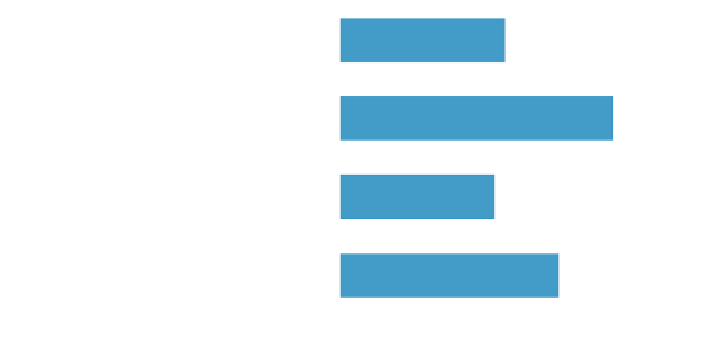Information Technology Reference
In-Depth Information
Fig. 13.12 Example
processor bound benchmark
(Burch
1992
)
Dhrystone
0.9
Sieve
1.5
Whetstone
0.85
MIPS
1.2
0
0.5
1
1.5
2
documentation. End users that are looking to purchase a product in your market
will expect illustrations, comparisons and easy to understand language with
minimal jargon.
13.5.5 When and How to Comprise Time and Functionality
Sometimes even the best design plans and schedules are either not realistic or for
some reason fall behind and are not fully executable by the deadlines at hand. In
this case, it is advisable and necessary to cut functionality. In a software engi-
neering class project completed by software engineering students at Robert Morris
University, the project was estimated at 40-20-20 (design, code and testing).
However, in the end being an academic setting the requirements gathering and
research took approximately 70 % of the time allotted to the project. Coding and
testing were given 20 and 10 % respectively (Acharya and Burke
2008
).
In this scenario the learning of Monopoly and various tools, platforms and
techniques took precedence over features such as trading properties, which was
dropped in the favor of implementing the project in platform independent C#
(Acharya and Burke
2008
). In any project it is easier to create loftier goals than
practically accomplishable. Even with goals that are reasonable for the scope of
the project, there will need to be considerations made with respect to deadlines and
features. A short guide is provided for when, what and how to properly work when
running behind schedule.
1. Determine the goal of the project.
(a) What fits best with the mission? Check the mission statement and project
goals.
(b) What is essential and what is not essential?

